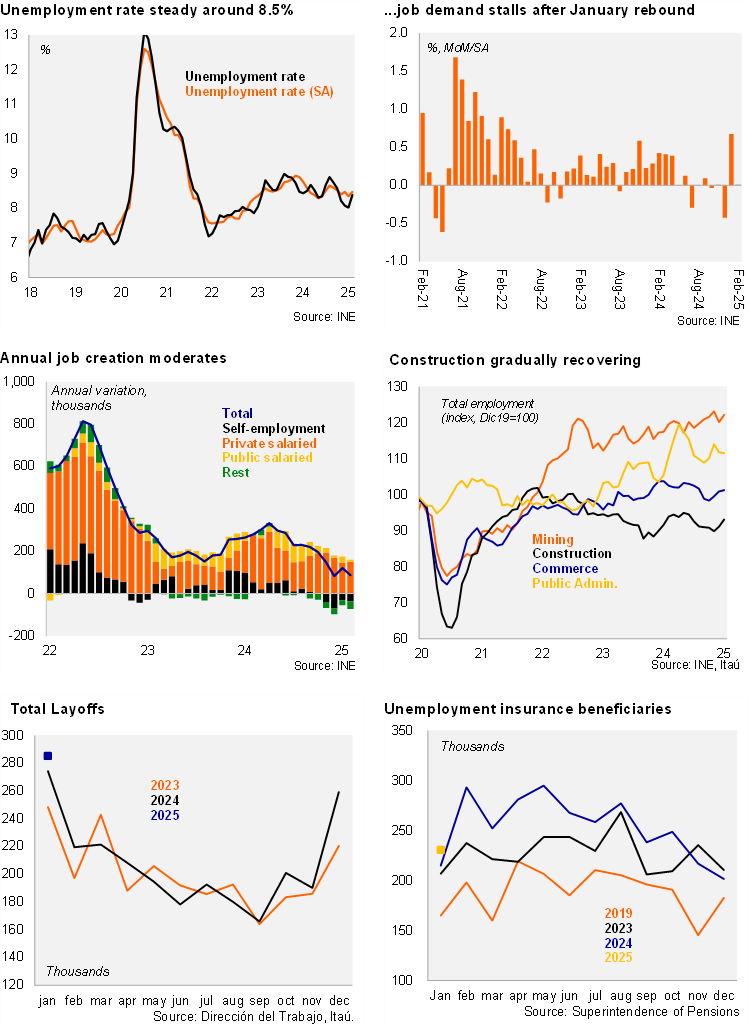According to the INE’s labor market survey, the unemployment rate came in at 8.4% during the February quarter, above our call and the Bloomberg median of 8.1%. The unemployment rate implies a 0.1pp fall over twelve months (below the 0.4pp adjustment in previous months). The participation rate remained at 62.3%, in line with the February 2024 rate, while employment increased by 0.9% YoY (1.3% in January), driven by transport (7.9% YoY), public administration (4.9%) and financial services (17.2%). The informality rate fell to 26.1%, down 1.3pp over one year, edging further below the 2018-2019 average (28.3%). At the margin, employment levels were flat after the surge registered in the previous month. The seasonally adjusted unemployment rate reached 8.5% in February (up 0.1pp; 8.9% cycle peak in the last November quarter). The unemployment rate (SA) has hovered around 8.5%, the upper bound of the estimated NAIRU, for the last eight months.
The BCCh’s labor demand proxy for the month of February fell to 60.6 from 72.2 in January, remaining well below the historical average (2017-2019 average of 91.6). On an annual basis, labor demand fell by 10% YoY. Data from the Labor Directorate has shown that total layoffs based on administrative records rose by 4% YoY in January, taking the moving quarter to an annual rise of 8%, suggesting that firms may be delaying the renewal of fixed-term contracts. Consistently, unemployment insurance beneficiaries in January were up 7% YoY, after two months of contraction.
Our take: Following a string of broadly better-than-expected labor market data from the INE survey in recent months, January data suggests the improvement in activity may not have a more meaningful effect on labor market outcomes, maintaining a certain degree of slack as also reflected by administrative data. Even though we expect the recovery of domestic activity to persist, driven by mining-led investment, the spillover effects into the rest of the economy may take some time, especially considering the substantial increases in labor costs. We expect the administration to present another minimum wage adjustment to Congress in April-May. We expect the unemployment rate to average 8.5% in 2025, in line with last year. The INE will publish labor market data for the quarter ending in March on April 29.

